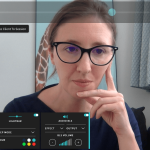EMDR is one of the therapeutic models I use a lot in my work. EMDR soon came to be reconized as the treatment of choice for Post Traumatic Stress Disorder (PTSD) by the NICE Guidelines in the UK, World Health Organization and the American Psychiatric Association. Since then, the scientific literature and clinical experience have evolved and found EMDR to be a highly effective treatment for a host of conditions.
What EMDR does best in my opinion, is it helps revisit and emotionally process memories so that they a) no longer hold the same emotional charge and b) the meaning previously associated with the memory (e.g. “I am bad”, “I am vulnerable”, “I am worthless”, “I am not good enough”) evolves to be more adaptive and positive. (There is a neurological explanation as to why this is so, which I won’t go into here.) This is as relevant and powerful when helping someone overcome a car accident, a sexual assault, or a traumatic birth as it is in helping someone come to terms with the harder to pinpoint experiences associated with instances such as parents adopting the silent treatment, or a sense of uncertainty, chaos or coldness in the family home.
EMDR typically involves using eye movements and other modes of bilateral stimulation, and many of my existing and new clients have asked whether it is possible to provide EMDR online. I am happy to say with hand on heart, armed with my clinical experience and the research evidence, that providing EMDR online is effective.
I’m adapting how I use it, relying less on my hand movements, though I do continue to do this in some circumstances. My clients and I have embraced online tools designed to allow for the provision of EMDR online, which evoke bilateral stimulation using dots on a screen and audio beeps. I’ve also helped clients learn ways they can create bilateral stimulation by tapping themselves as they follow me on screen.

More recent evidence sheds light on the mechanism which allows EMDR to achieve results and suggests that taxing the working memory is an essential component. The more the working memory is challenged during bilateral stimulation the better, and what better way to achieve this than navigating these new ways of working!
An essential element of EMDR (all therapy actually) is the attunement of the therapist to her patient. This is something I work hard to maintain despite the challenge of being behind a screen. I make sure my patient can see me and I sit close to the screen so they can see my facial expressions.
There are things I ask my client to take care of their end. I request that they find a quiet place where they won’t be disturbed. I ask them to use a laptop or PC if possible as this lends itself to a wider sweep of the dot or my hand than is possible to experience on a phone. I ask them to position their device so I can see as much as their body as possible (The Body Keeps the Score after all ….. This is a reference to a seminal book of the same name). And I ask them to sit close to the screen so I can see their eye movements and facial expressions.
I’m thrilled to have been able to continue to support my patients using EMDR while working online, and moved to see existing and new clients make great progress despite their significant challenges. As always, I learn so much from my patients. I am grateful for their trust in me and for making the leap online with me. I never cease to be amazed and moved by what my patients have encountered and how they navigate their lives accordingly. I really do love what I do!
Dr. Marie Thompson Clinical Psychologist and Clinical Director, Vivamus.

